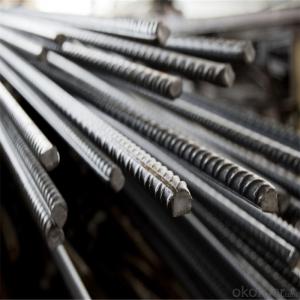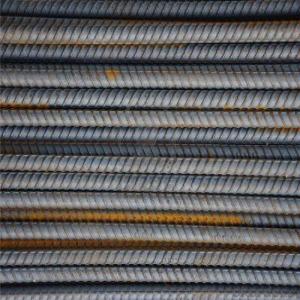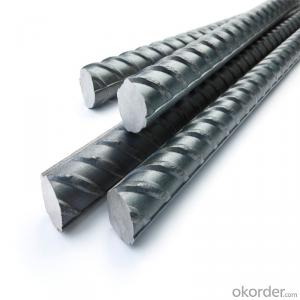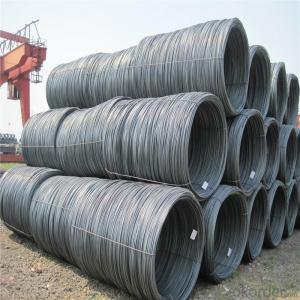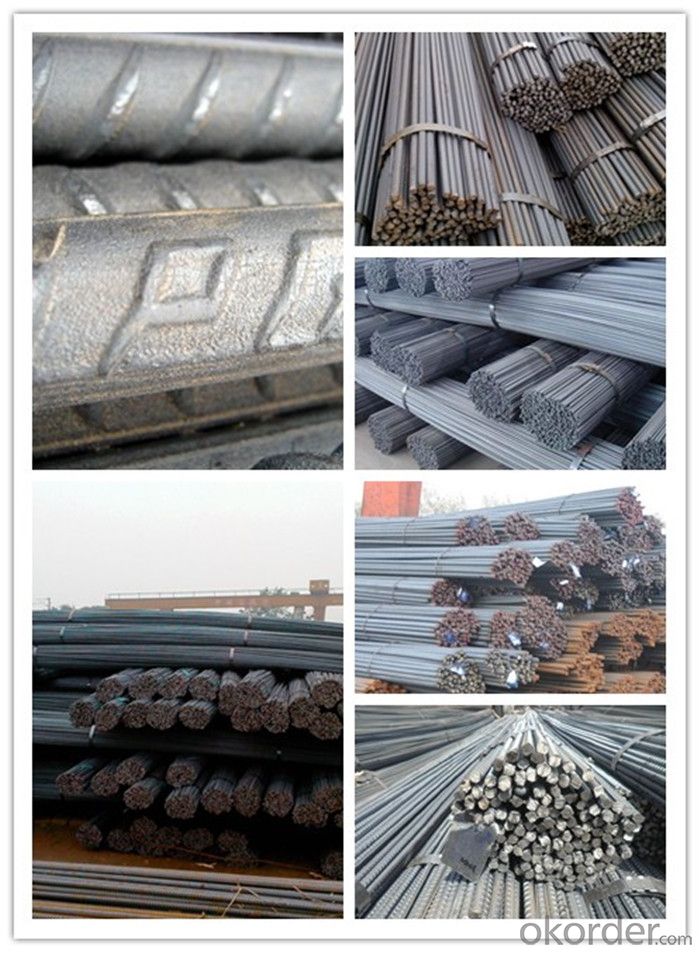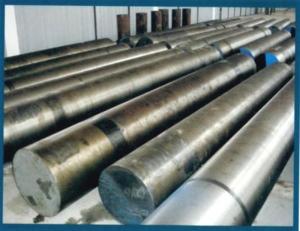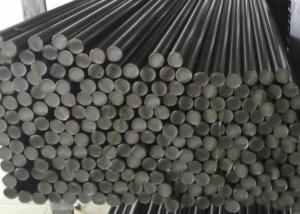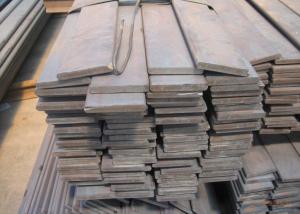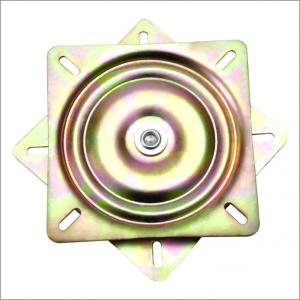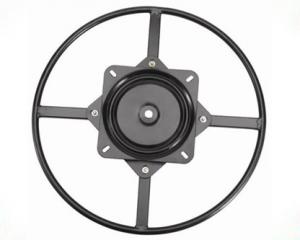Construction Reinforcing Steel
- Loading Port:
- Tianjin
- Payment Terms:
- TT OR LC
- Min Order Qty:
- 170 m.t.
- Supply Capability:
- 500000 m.t./month
OKorder Service Pledge
OKorder Financial Service
You Might Also Like
Item specifice
Construction Reinforcing Steel
Description of Construction Reinforcing Steel
1, Diameter: 5.5mm-10mm Construction Reinforcing Steel
10m- 40mm Construction Reinforcing Steel
2, Length: 6m, 9m, 12m or customized
3, Standard: GB, ASTM, AISI, SAE, DIN, JIS, EN
OEM technology - send detailed technical parameters for accurate quotation.
2, Produce Process: smelt iron - EAF smelt billet - ESR smelt billet -
hot rolled or forged to get the steel round bar and plate
3, Heat Treatment: annealing, normalizing, tempering, quenching
4, Surface Treatment: Black
5, Quality Assurance: We accept third party inspection for all orders.
Chemical Composition of Construction Reinforcing Steel
Grade | Technical data of the original chemical composition(%) | |||||
Reinforcing steel bar HRB335 | C | Mn | Si | S | P | B |
≤0.25 | ≤1.60 | ≤0.80 | ≤0.045 | ≤0.045 | >0.0008 | |
Physics Capability | ||||||
Yield Strength(N/cm2) | Tensile Strength(N/cm2) | Elongation(%) | ||||
≥ 335 | ≥490 | ≥16 | ||||
Reinforcing steel bar HRB400 | C | Mn | Si | S | P | B |
≤0.25 | ≤0.16 | ≤0.80 | ≤0.045 | ≤0.045 | 0.04-0.12 | |
Physics Capability | ||||||
Yield Strength(N/cm2) | Tensile Strength(N/cm2) | Elongation(%) | ||||
≥ 400 | ≥ 570 | ≥ 14 | ||||
Products Show of Construction Reinforcing Steel
Company Information
CNBM International Corporation is the most important trading platform of CNBM group.
Whith its advantages, CNBM International are mainly concentrate on Cement, Glass, Iron and Steel, Ceramics industries and devotes herself for supplying high qulity series of refractories as well as technical consultancies and logistics solutions.


F A Q
1, Your advantages?
professional products inquiry, products knowledge train (for agents), smooth goods delivery, excellent customer solution proposale
2, Test & Certificate?
SGS test is available, customer inspection before shipping is welcome, third party inspection is no problem
3, Factory or Trading Company?
CNBM is a trading company but we have so many protocol factories and CNBM works as a trading department of these factories. Also CNBM is the holding company of many factories.
4, Payment Terms?
30% TT as deposit and 70% before delivery.
Irrevocable L/C at sight.
5, Trading Terms?
EXW, FOB, CIF, FFR, CNF
6, After-sale Service?
CNBM provides the services and support you need for every step of our cooperation. We're the business partner you can trust.
For any problem, please kindly contact us at any your convenient time.
We'll reply you in our first priority within 24 hours.
- Q:What are the specific requirements for special steel used in the defense sector?
- Due to the critical nature of its applications, the defense sector imposes highly demanding requirements on special steel. These requirements encompass: 1. Exceptional strength and durability: Special steel utilized in the defense sector must possess outstanding strength and durability to withstand extreme conditions and endure wear and tear. It should have the capacity to endure high levels of stress, impact, and pressure. 2. Superior corrosion resistance: Defense equipment frequently operates in harsh environments and is exposed to elements that can cause corrosion. Consequently, special steel employed in the defense sector must display excellent corrosion resistance properties to ensure the equipment's longevity and reliability. 3. Heat resistance: Defense applications often involve exposure to high temperatures, such as in jet engines or armored vehicle components. Special steel used in these sectors must retain its strength and structural integrity even at elevated temperatures. 4. Machinability and weldability: Special steel employed in the defense sector should possess favorable machinability and weldability characteristics to facilitate manufacturing and assembly processes. This allows for ease of fabrication, repair, and maintenance of defense equipment. 5. Hardness and toughness: Defense applications necessitate a combination of hardness and toughness in special steel. It must resist penetration and deformation while simultaneously being able to absorb energy and resist fracture. 6. Non-magnetic properties: In specific defense applications, such as submarines and magnetic resonance imaging (MRI) equipment, non-magnetic properties are essential. Special steel employed in these sectors must possess low magnetic permeability to prevent interference with sensitive electronic systems. 7. Certification and compliance: Special steel used in the defense sector must meet specific certification and compliance standards, such as those established by defense organizations or international quality management systems like ISO 9001. These standards guarantee the quality, traceability, and reliability of the steel. Meeting these specific requirements for special steel utilized in the defense sector is crucial to ensure the safety, effectiveness, and longevity of defense equipment and systems. Rigorous testing and quality control processes are implemented to ensure that the steel meets the required specifications and standards.
- Q:What is the role of research and development in advancing special steel technology?
- The advancement of special steel technology relies heavily on research and development (R&D). Special steel, which refers to steel alloys with enhanced properties like high strength, corrosion resistance, heat resistance, or electrical conductivity, benefits greatly from R&D efforts. R&D activities are crucial for pushing the boundaries of special steel technology and creating new and improved alloys. Scientists and engineers continuously research and explore new compositions, manufacturing processes, and heat treatment techniques to enhance the properties and performance of special steels. One of the primary roles of R&D in advancing special steel technology involves discovering and developing new alloy compositions. R&D teams analyze the properties of different elements and their interactions to design steel alloys with desired characteristics. Through experiments and testing, they optimize the alloy to meet specific application requirements and enhance properties like strength, hardness, toughness, or other desirable traits. Additionally, R&D focuses on developing innovative manufacturing processes for special steel production. Techniques such as vacuum melting, rapid solidification, or powder metallurgy are employed to achieve a refined microstructure and improved mechanical properties. R&D teams work on optimizing these processes to enhance the overall quality, efficiency, and cost-effectiveness of special steel production. R&D also plays a crucial role in improving heat treatment techniques for special steels. Heat treatment is a critical step in fabricating special steels as it helps achieve desired microstructures and properties. R&D endeavors to optimize heat treatment parameters like temperature, time, and cooling rates to enhance the mechanical properties and performance of special steels. Furthermore, R&D contributes to the development of new testing and characterization methods for special steels. This enables the evaluation and validation of properties and performance under various conditions. Advanced techniques like electron microscopy, X-ray diffraction, and mechanical testing are employed to assess microstructural features, phase transformations, and mechanical behavior. Overall, R&D activities are indispensable for advancing special steel technology. Through continuous research, innovation, and optimization, R&D teams contribute to the development of new and improved alloys, manufacturing processes, heat treatment techniques, and testing methods. This ultimately leads to the advancement of special steel technology and its applications in industries like automotive, aerospace, energy, and construction.
- Q:What are the different surface hardening methods used for special steel?
- There are several surface hardening methods used for special steel, including carburizing, nitriding, induction hardening, flame hardening, and laser hardening.
- Q:What are the main advantages of using special steel in the automotive industry?
- Special steel offers several advantages in the automotive industry. Firstly, it provides enhanced strength and durability, ensuring the safety and reliability of vehicles. Secondly, special steel is lightweight, contributing to fuel efficiency and reducing carbon emissions. Additionally, it offers excellent formability and weldability, allowing for complex and intricate designs. Lastly, special steel possesses high corrosion resistance, extending the lifespan of automotive components and reducing maintenance costs. Overall, the use of special steel in the automotive industry enhances performance, efficiency, safety, and longevity.
- Q:What are the different methods for improving the magnetic properties of special steel?
- There are several methods for improving the magnetic properties of special steel, including annealing, alloying, and heat treatment. Annealing involves heating the steel to a specific temperature and then slowly cooling it, which helps to refine the grain structure and reduce magnetic losses. Alloying is another method, where specific elements like nickel or cobalt are added to the steel to enhance its magnetic properties. Heat treatment is also commonly used, involving controlled heating and cooling processes to alter the microstructure and improve magnetic performance.
- Q:What are the main advantages of using special steel in aerospace applications?
- The main advantages of using special steel in aerospace applications are its high strength-to-weight ratio, excellent corrosion resistance, and exceptional fatigue resistance. These properties make special steel ideal for withstanding the extreme conditions of aerospace environments, ensuring the safety and longevity of aircraft components. Additionally, special steel can be easily machined and welded, allowing for intricate designs and efficient manufacturing processes in the aerospace industry.
- Q:How is special steel used in the construction supply chain?
- Special steel is used in various ways in the construction supply chain. It is commonly used in the production of high-quality tools and equipment used in construction, such as drills, saws, and hammers. Special steel is also utilized in the manufacturing of structural components, such as beams and columns, which provide strength and durability to buildings and infrastructure projects. Additionally, it is used in the production of reinforcing bars and wire mesh, which reinforce concrete structures and ensure their stability. Overall, special steel plays a crucial role in enhancing the performance and safety of construction materials and products in the supply chain.
- Q:How is special steel used in the production of gears?
- Special steel is commonly used in the production of gears due to its superior strength, durability, and resistance to wear and fatigue. The high-quality properties of special steel allow gears to withstand heavy loads, high speeds, and harsh operating conditions, ensuring reliable and efficient performance. Additionally, special steel can be heat treated to optimize its hardness and toughness, further enhancing gear performance and extending their lifespan.
- Q:What are the different surface cleaning methods used for special steel?
- There are several surface cleaning methods that can be used for special steel, depending on the specific requirements and the level of cleanliness desired. Some of the commonly used methods include: 1. Mechanical Cleaning: This method involves the use of abrasive materials or tools to physically remove dirt, rust, and other contaminants from the surface of the steel. It can be done through processes such as sanding, wire brushing, or abrasive blasting. 2. Chemical Cleaning: Chemical cleaning involves the use of chemical agents to dissolve or loosen dirt, grease, oil, or rust from the surface of the steel. Different types of chemicals can be used depending on the type and severity of the contaminants. Acid pickling is one such method that involves immersing the steel in an acid solution to remove scale and rust. 3. High-pressure Water Cleaning: This method utilizes the force of high-pressure water jets to remove dirt, grease, and other contaminants from the surface of the steel. It is effective in removing loose particles and can be used as a pre-cleaning step before other surface preparation methods. 4. Ultrasonic Cleaning: Ultrasonic cleaning is a non-abrasive method that uses high-frequency sound waves to create microscopic bubbles in a cleaning solution. These bubbles implode upon contact with the surface of the steel, effectively removing contaminants from hard-to-reach areas. 5. Electrochemical Cleaning: This method involves passing an electric current through a cleaning solution or electrolyte to facilitate the removal of contaminants from the steel surface. It is useful in removing rust and restoring the steel's appearance. 6. Thermal Cleaning: Thermal cleaning methods, such as flame cleaning or heat treatment, involve subjecting the steel to high temperatures to burn off organic contaminants or to induce controlled oxidation and subsequent removal of scale, rust, or other surface impurities. It is important to note that the choice of surface cleaning method depends on various factors, including the type of contaminants, the condition of the steel, the desired level of cleanliness, and the overall application requirements. A combination of different methods may be used to achieve the best results.
- Q:What are the different methods of surface electropolishing for special steel?
- There are several methods of surface electropolishing for special steel, including the use of acid-based or alkaline-based electrolytes, pulse current electropolishing, and reverse current electropolishing. The choice of method depends on factors such as the type of special steel being treated and the desired surface finish.
1. Manufacturer Overview |
|
|---|---|
| Location | |
| Year Established | |
| Annual Output Value | |
| Main Markets | |
| Company Certifications | |
2. Manufacturer Certificates |
|
|---|---|
| a) Certification Name | |
| Range | |
| Reference | |
| Validity Period | |
3. Manufacturer Capability |
|
|---|---|
| a)Trade Capacity | |
| Nearest Port | |
| Export Percentage | |
| No.of Employees in Trade Department | |
| Language Spoken: | |
| b)Factory Information | |
| Factory Size: | |
| No. of Production Lines | |
| Contract Manufacturing | |
| Product Price Range | |
Send your message to us
Construction Reinforcing Steel
- Loading Port:
- Tianjin
- Payment Terms:
- TT OR LC
- Min Order Qty:
- 170 m.t.
- Supply Capability:
- 500000 m.t./month
OKorder Service Pledge
OKorder Financial Service
Similar products
New products
Hot products
Related keywords
